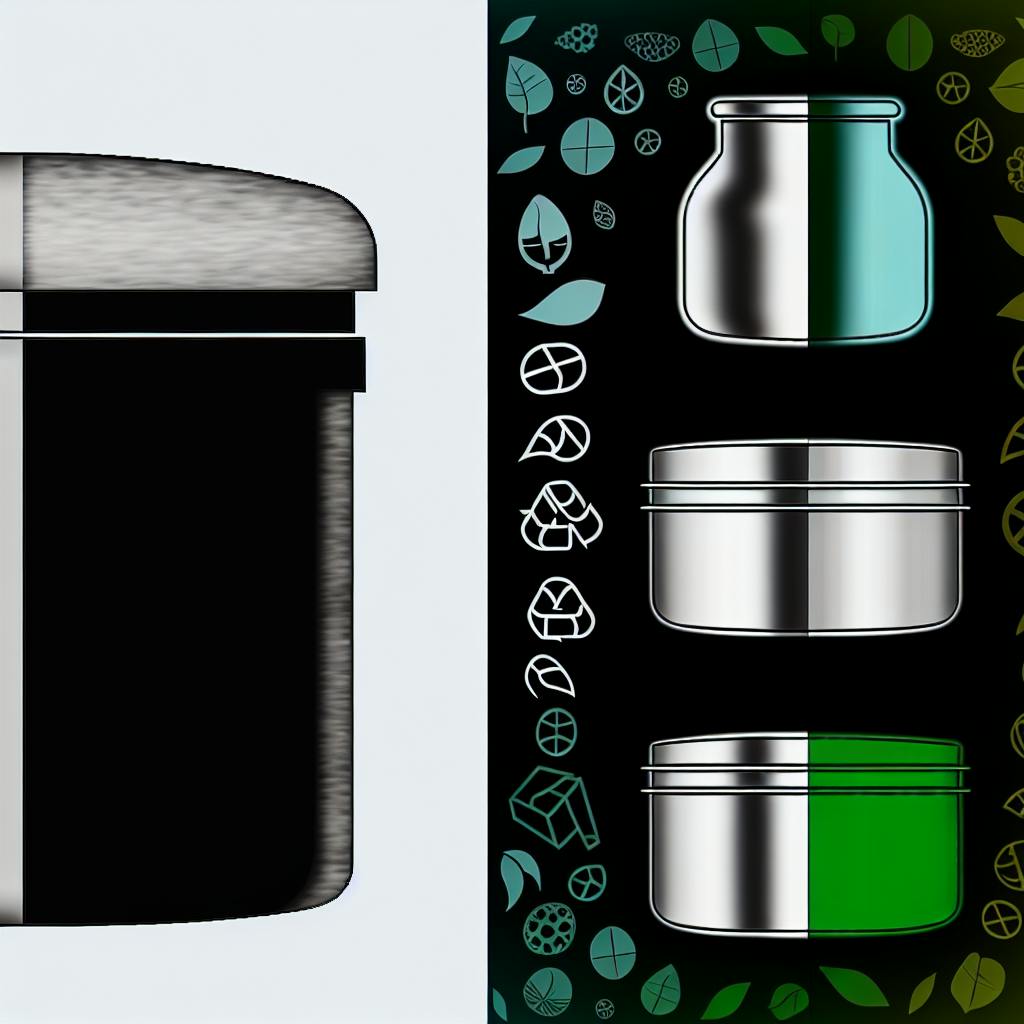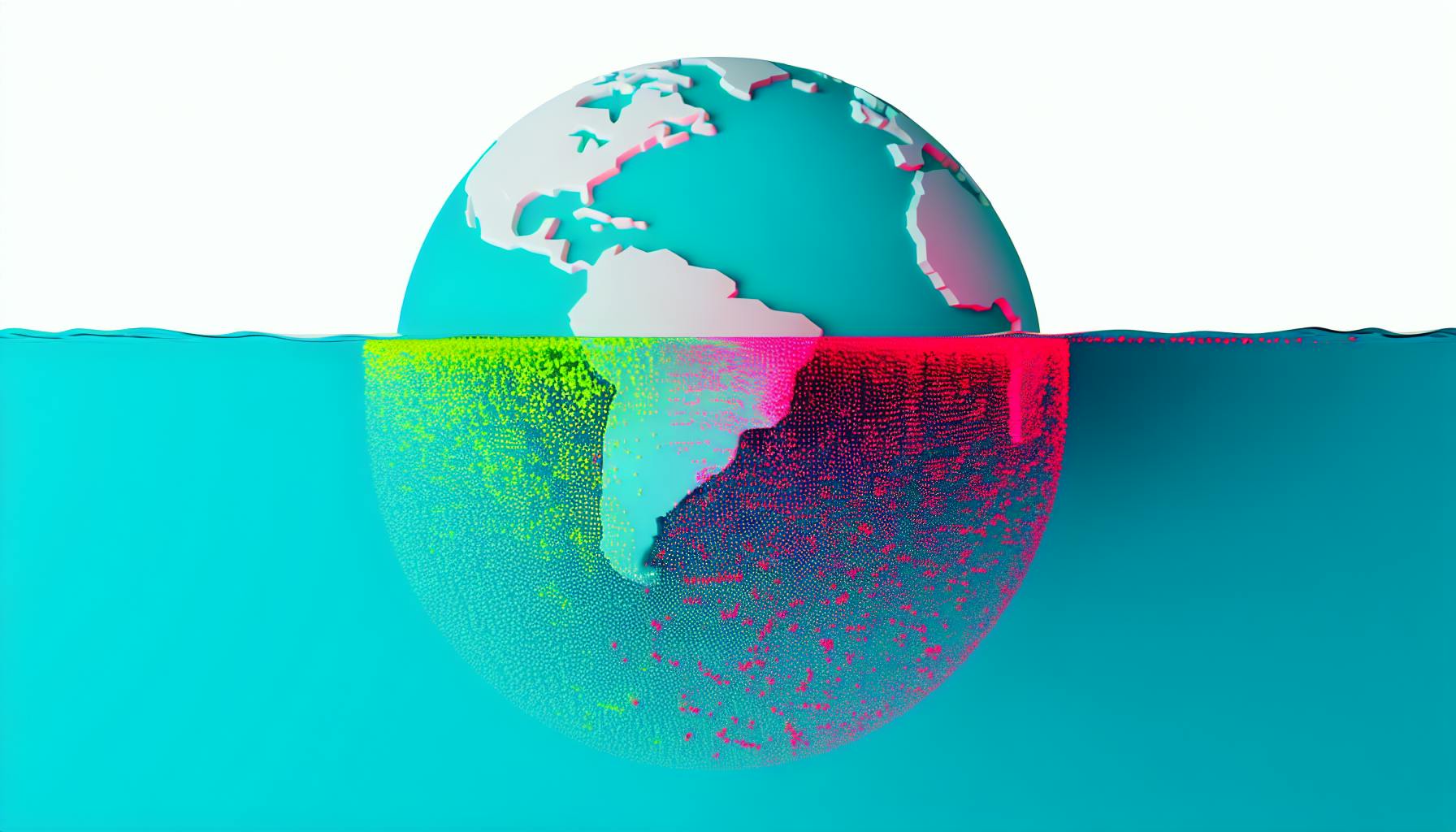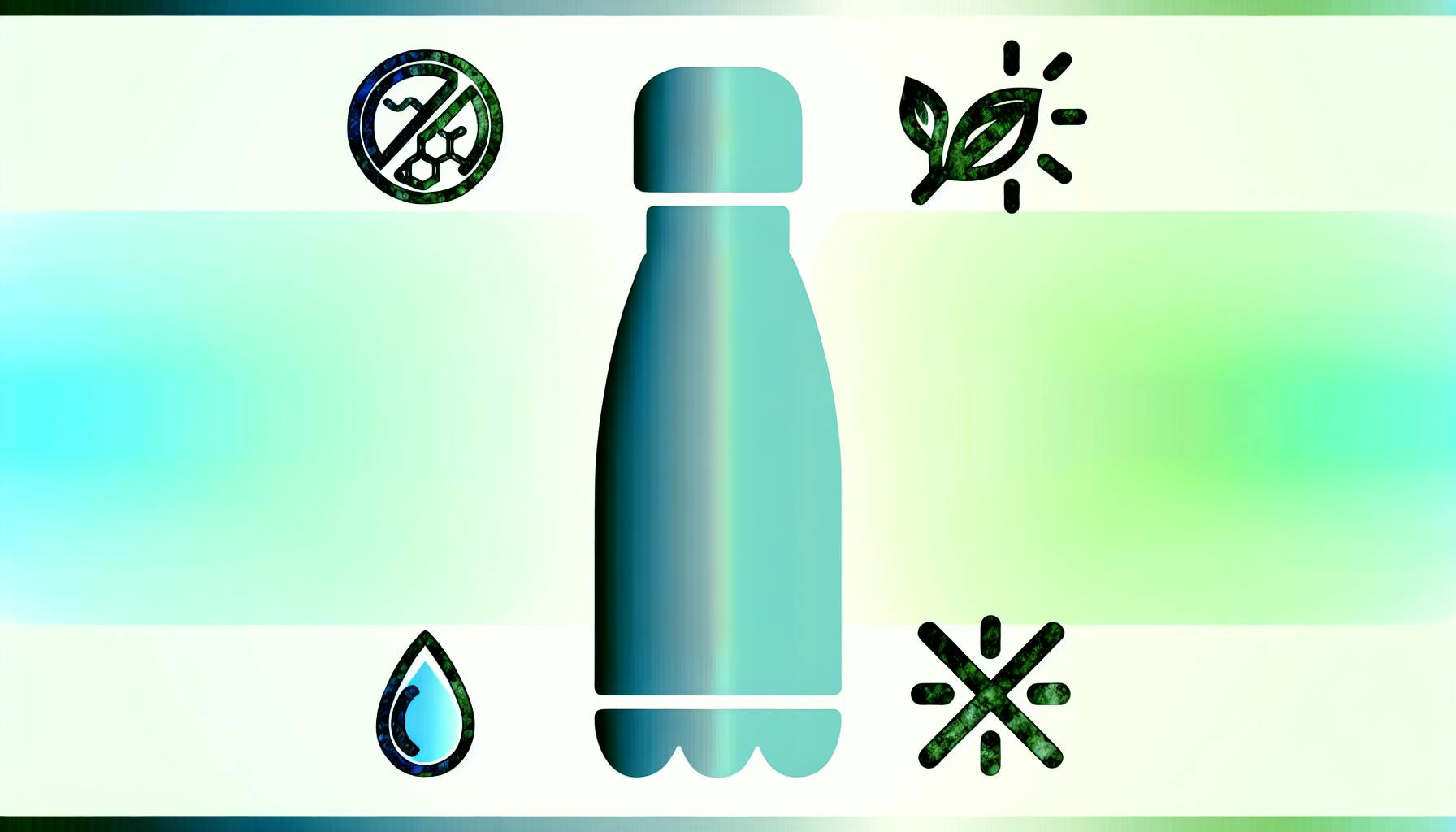The world is facing a plastic pollution crisis, with millions of tons of plastic waste harming the environment and human health each year. To combat this issue, we must transition to sustainable plastic alternatives made from renewable, biodegradable, and compostable materials.
Key Benefits of Plastic Alternatives:
- Reduce plastic waste and pollution
- Mitigate greenhouse gas emissions
- Create a healthier planet for future generations
Types of Plastic Alternatives
| Type | Description |
|---|---|
| Bioplastics | Made from renewable biomass like corn starch or sugarcane |
| Biodegradable Plastics | Break down naturally in the environment |
| Compostable Plastics | Decompose into carbon dioxide, water, and biomass |
| Natural Composites | Combination of natural fibers and biodegradable plastics |
| Reusable Products | Designed for multiple uses, reducing single-use plastics |
Growing Demand for Plastic-Free Products
Consumers are seeking eco-friendly alternatives, with searches for "plastic-free deodorant" up 90% and "non-plastic food storage" up 47%. Additionally, 83% of young consumers are willing to pay more for sustainable packaging.
Governments are also implementing bans and restrictions on single-use plastics, driving companies to innovate and adopt plastic alternatives.
Scaling Up Plastic Alternatives
New technologies are enabling mass production of plastic alternatives using plant-based materials. Companies like Achieve Pack and Ecologic offer compostable packaging solutions, while Notpla creates biodegradable and edible packaging from seaweed and plants.
While scaling up can be costly initially, the long-term benefits of reduced waste and lower production costs make it worthwhile for producers and consumers.
Industries Leading the Plastic-Free Movement
- Food Packaging: Anchor, Achieve Pack, and Ecologic offer sustainable packaging solutions.
- Cosmetics: Ethique, Evolve Beauty, and Odylique use compostable, glass, or recycled plastic packaging.
- Packaging Materials: Notpla and GoodFor transform seaweed and plants into biodegradable packaging.
Challenges and Strategies for Adoption
- Financial and Logistical Hurdles: Offer government incentives, invest in R&D, and develop infrastructure.
- Educating Consumers: Launch awareness campaigns, provide clear labeling, and implement policies promoting plastic alternatives.
By working together, we can create a more sustainable future and reduce our reliance on plastic.
What Are Plastic Alternatives?
Plastic alternatives are materials and products that can replace traditional plastic in various applications, reducing the environmental harm caused by plastic waste. These alternatives can be biodegradable, compostable, or reusable, and are often made from natural resources such as plants, algae, or recycled materials.
Types of Plastic Alternatives
The following table lists some common types of plastic alternatives:
| Type | Description |
|---|---|
| Bioplastics | Made from renewable biomass sources such as corn starch, sugarcane, or potato starch |
| Biodegradable plastics | Made from petrochemicals but can break down naturally in the environment |
| Compostable plastics | Made from organic materials that can decompose into carbon dioxide, water, and biomass |
| Natural composites | Made from a combination of natural fibers and biodegradable plastics |
| Reusable products | Designed to be used multiple times, reducing the need for single-use plastics |
Plastic's Environmental Impact
The production and disposal of traditional plastic have significant environmental consequences, including:
- Greenhouse gas emissions: plastic production contributes to climate change
- Pollution: plastic waste ends up in oceans, land, and air, harming wildlife and human health
- Microplastics: small plastic particles found in drinking water, food, and air, with unknown long-term effects on human health
- Waste management: plastic waste often ends up in landfills or incinerators, contributing to waste management issues
The shift towards plastic alternatives is crucial for reducing plastic waste and mitigating its environmental impacts. By adopting eco-friendly alternatives, we can create a more sustainable future for generations to come.
The Growing Market for Plastic-Free Products
The shift towards plastic-free products is gaining momentum, driven by consumer demand and regulatory pressures. This section explores the economic and social forces propelling the growth of plastic-free markets.
Consumer Demand for Eco-Friendly Products
Consumers are seeking out eco-friendly alternatives to traditional plastics, driving growth in the plastic-free market. Recent data shows:
| Search Term | Increase in Searches |
|---|---|
| "Plastic-free deodorant" | 90% |
| "Plastic-free laundry detergent" | 59% |
| "Non-plastic food storage" | 47% |
Additionally, 83% of young consumers are willing to pay more for items with sustainable packaging, indicating a strong desire for environmentally friendly products.
Regulations Driving the Plastic-Free Market
Government policies and regulations are also driving the growth of the plastic-free market. Many countries are implementing bans or restrictions on single-use plastics, such as straws, bags, and cutlery, forcing companies to adapt and innovate.
The growing demand for plastic-free products and increasing regulatory pressures are creating a perfect storm for the growth of the plastic-free market. As consumers and governments continue to push for sustainable solutions, companies will need to adapt and innovate to stay competitive. In the next section, we will explore the scaling up of plastic alternatives and the new technologies and cost implications involved.
sbb-itb-1dc3f59
Scaling Up Plastic Alternatives
Scaling up plastic alternatives is crucial to reducing plastic waste and promoting sustainability. As demand for eco-friendly products grows, companies must adapt to meet consumer needs.
New Technologies for Large-Scale Production
Recent advancements in technology have made it possible to mass-produce plastic alternatives more efficiently and cost-effectively. Companies like Achieve Pack and Ecologic are using plant-based materials to create compostable packaging solutions. These innovations enable businesses to scale up production and meet increasing demand for sustainable products.
| Company | Technology | Description |
|---|---|---|
| Achieve Pack | Plant-based materials | Compostable packaging solutions |
| Ecologic | Plant-based materials | Compostable packaging solutions |
| Notpla | Seaweed and plants | Biodegradable and edible packaging solutions |
Cost Implications for Producers and Consumers
While scaling up plastic alternatives can be costly, the long-term benefits outweigh the expenses. Producers can benefit from reduced waste and lower production costs, while consumers can enjoy eco-friendly products at a lower cost.
| Cost Implication | Description |
|---|---|
| Reduced waste | Lower production costs for producers |
| Lower production costs | Eco-friendly products at a lower cost for consumers |
According to a study by Trucost, replacing plastics with alternative materials could increase environmental costs from $139 billion to $533 billion annually. However, investing in sustainable technologies and practices can mitigate this cost.
As demand for plastic-free products continues to grow, companies must find ways to balance the cost of production with the benefits of sustainability. By investing in new technologies and sustainable practices, businesses can reduce costs and promote a more environmentally friendly future.
Industries Leading the Plastic-Free Movement
The shift towards plastic-free alternatives is gaining momentum across various industries. Companies are recognizing the environmental impact of plastic waste and are taking bold steps to reduce their plastic footprint. Here, we'll explore the sectors that are at the forefront of this movement.
Sustainable Food Packaging
The food industry is one of the largest contributors to plastic waste. However, companies like Anchor, Achieve Pack, and Ecologic are pioneering sustainable food packaging solutions.
| Company | Sustainable Packaging Solution |
|---|---|
| Anchor | Plant-based, 2-liter milk bottle made from sugarcane |
| Achieve Pack | Compostable packaging solutions using plant-based materials |
| Ecologic | Compostable packaging solutions using plant-based materials |
Plastic-Free Cosmetics
The beauty industry is also joining the plastic-free movement. Brands like Ethique, Evolve Beauty, and Odylique are eliminating plastic waste through innovative packaging and product design.
| Brand | Sustainable Packaging Solution |
|---|---|
| Ethique | Compostable cardboard packaging for solid skincare products |
| Evolve Beauty | Mostly glass and recycled plastic packaging |
| Odylique | Glass or plastic made from 100% recycled plastic |
Transforming Packaging Materials
The shift towards sustainable packaging materials is a significant challenge for companies. However, innovators like Notpla and GoodFor are transforming packaging materials using seaweed and plants.
| Company | Sustainable Packaging Material |
|---|---|
| Notpla | Seaweed and plants for biodegradable and edible packaging solutions |
| GoodFor | Locally made, 100% plastic-free and compostable packaging |
These industries are paving the way for a plastic-free future. As consumer demand for eco-friendly products grows, companies must adapt to meet the changing landscape. By investing in sustainable technologies and practices, businesses can reduce costs, promote a more environmentally friendly future, and stay ahead of the competition.
Success Stories and Challenges
The journey towards a plastic-free future is not without its successes and difficulties. Companies and organizations are pioneering innovative solutions to reduce plastic waste, but they also face significant challenges.
Compostable Tea Bags
Some brands have successfully transitioned to fully compostable tea bag materials, reducing plastic waste. For example, PG Tips and Yorkshire Tea have replaced traditional plastic tea bags with biodegradable alternatives made from plant-based materials. This shift has not only reduced plastic waste but also provided a more sustainable option for consumers.
Seaweed Packaging Solutions
Companies like Sway are revolutionizing the packaging industry with seaweed-derived materials. Sway's technology enables seaweed to replace flexible plastics at scale, offering a 100% biobased, home-compostable, and microplastic-free ingredient. This innovation has the potential to replenish ecosystems and support coastal communities.
| Challenge | Description |
|---|---|
| Scaling up seaweed farming | Ensuring sustainability while increasing production |
| Material durability | Developing materials that can withstand various conditions |
| Processing techniques | Improving methods to make seaweed-based materials more efficient |
| Regulatory compliance | Meeting regulations and standards for biobased materials |
Despite these challenges, the potential of seaweed-based packaging is vast. As the industry continues to evolve, we can expect to see more innovative solutions emerge, driving us closer to a plastic-free future.
Global Cooperation for Plastic Alternatives
The global effort to combat plastic pollution has gained significant momentum in recent years. International cooperation plays a crucial role in fostering the development and distribution of plastic alternatives across borders. In this section, we'll explore the initiatives and challenges in promoting sustainable trade and overcoming trade barriers.
UN Support for Sustainable Trade
The United Nations has taken a significant step towards addressing plastic pollution by adopting a historic resolution to end plastic pollution. This landmark agreement commits to addressing the full lifecycle of plastics and calls for enhanced international collaboration to advance solutions and circular economy approaches.
Overcoming Trade Barriers
Despite the growing demand for plastic-free products, international trade challenges can hinder the widespread adoption of plastic alternatives. Trade Barriers:
- Tariffs
- Regulations
To overcome these challenges, governments, organizations, and industries must work together to establish harmonized standards and regulations that facilitate the trade of environmentally friendly packaging materials.
By fostering global cooperation and addressing trade barriers, we can accelerate the transition to a plastic-free future. As the demand for sustainable products continues to grow, it's essential that we work together to create a more circular and environmentally conscious economy.
Challenges and Strategies for Adoption
Financial and Logistical Hurdles
Switching to plastic alternatives can be costly, especially for small and medium-sized businesses. Additionally, the lack of infrastructure and resources in some regions can make it difficult to implement plastic-free solutions.
Overcoming Financial Hurdles
| Strategy | Description |
|---|---|
| Government Incentives | Offer subsidies to encourage the adoption of plastic alternatives |
| Research and Development | Invest in R&D to reduce the cost of sustainable materials |
| Infrastructure Development | Improve infrastructure and resources in regions that lack them |
Educating Consumers and Changing Mindsets
Changing consumer behavior and mindsets requires a concerted effort from governments, organizations, and individuals.
Effective Strategies
| Strategy | Description |
|---|---|
| Awareness Campaigns | Raise awareness about the environmental impact of plastic pollution |
| Education and Training | Provide clear labeling and information about sustainable materials |
| Incentives and Policies | Implement policies and regulations that promote the use of plastic alternatives |
By working together, we can create a more sustainable future and reduce our reliance on plastic.
The Future of Plastic Alternatives
The shift towards a microplastic-free market is gaining momentum, and the future of plastic alternatives looks promising. As consumers become more environmentally conscious and governments implement regulations to reduce plastic waste, the demand for sustainable alternatives is on the rise.
Emerging Materials and Technologies
New materials and technologies are being developed to replace traditional plastics. For example, bioplastics made from renewable resources like corn starch or sugarcane are becoming increasingly popular. Additionally, companies are creating plastic alternatives from microorganisms that break down naturally.
| Material | Description |
|---|---|
| Bioplastics | Made from renewable resources like corn starch or sugarcane |
| Microorganism-based plastics | Break down naturally, reducing plastic waste |
Policy and Market Trends
Governments and consumers are driving change, leading to shifts in policies and market trends. The increasing demand for eco-friendly products is driving companies to invest in sustainable packaging and production methods. Governments are also implementing regulations to reduce plastic waste, such as banning single-use plastics and increasing recycling rates.
| Policy/Market Trend | Description |
|---|---|
| Increasing demand for eco-friendly products | Driving companies to invest in sustainable packaging and production methods |
| Government regulations | Banning single-use plastics and increasing recycling rates |
The future of plastic alternatives looks bright, with emerging materials and technologies, changing policies, and shifting market trends all contributing to a more sustainable future.
Moving Towards a Plastic-Free World
The shift towards a microplastic-free market is gaining momentum. To accelerate this transition, we need to work together towards a common goal. Governments, companies, and individuals must collaborate to create a world where plastic alternatives are the norm.
Raising Awareness
One crucial step is to increase awareness about the impact of plastic waste on our environment. By educating consumers about the benefits of eco-friendly products, we can drive demand for sustainable alternatives.
Supporting Innovation
Another key aspect is to support innovation in plastic alternatives. Companies and researchers are developing new materials and technologies that can replace traditional plastics. By investing in these initiatives, we can accelerate the development of sustainable solutions.
Collective Effort
Moving towards a plastic-free world requires a collective effort. We must work together to create a future where plastic waste is a thing of the past. By making conscious choices in our daily lives, supporting sustainable brands, and advocating for policy changes, we can create a better future for our planet.
What We Can Do
| Action | Description |
|---|---|
| Make conscious choices | Choose eco-friendly products and reduce plastic use |
| Support sustainable brands | Encourage companies to adopt sustainable practices |
| Advocate for policy changes | Push for regulations that reduce plastic waste |
Remember, every small action counts, and together, we can make a significant impact. Let's work towards a future where plastic alternatives are the norm, and our planet can thrive without the burden of microplastics.
FAQs
Does deodorant have microplastics?
Yes, some deodorants contain microplastics. These tiny plastics are often used in personal care products like cosmetics, skincare, and haircare items. Check the ingredient list to see if your deodorant contains microplastics.
What products commonly contain microplastics?
Microplastics are found in many personal care products, including:
| Product Type | Examples |
|---|---|
| Cosmetics | Mascara, lipstick, foundation, highlighters |
| Skincare | Face powders, hair styling products, sunscreen |
| Haircare | Shampoos, conditioners, hair masks |
When shopping, look for certifications like "Zero Plastic Inside" to ensure the product is microplastic-free.
How can I avoid microplastics in my daily life?
To reduce your exposure to microplastics:
- Check the ingredient list of personal care products
- Choose products with natural exfoliants like sugar, salt, or coffee grounds
- Opt for certified microplastic-free products
By making small changes, you can contribute to a microplastic-free world.


